In a cyclic process, a gas is taken from state A to E via path - I as shown in the indicator diagram and taken back to state A from state B via path-II. In the complete cycle
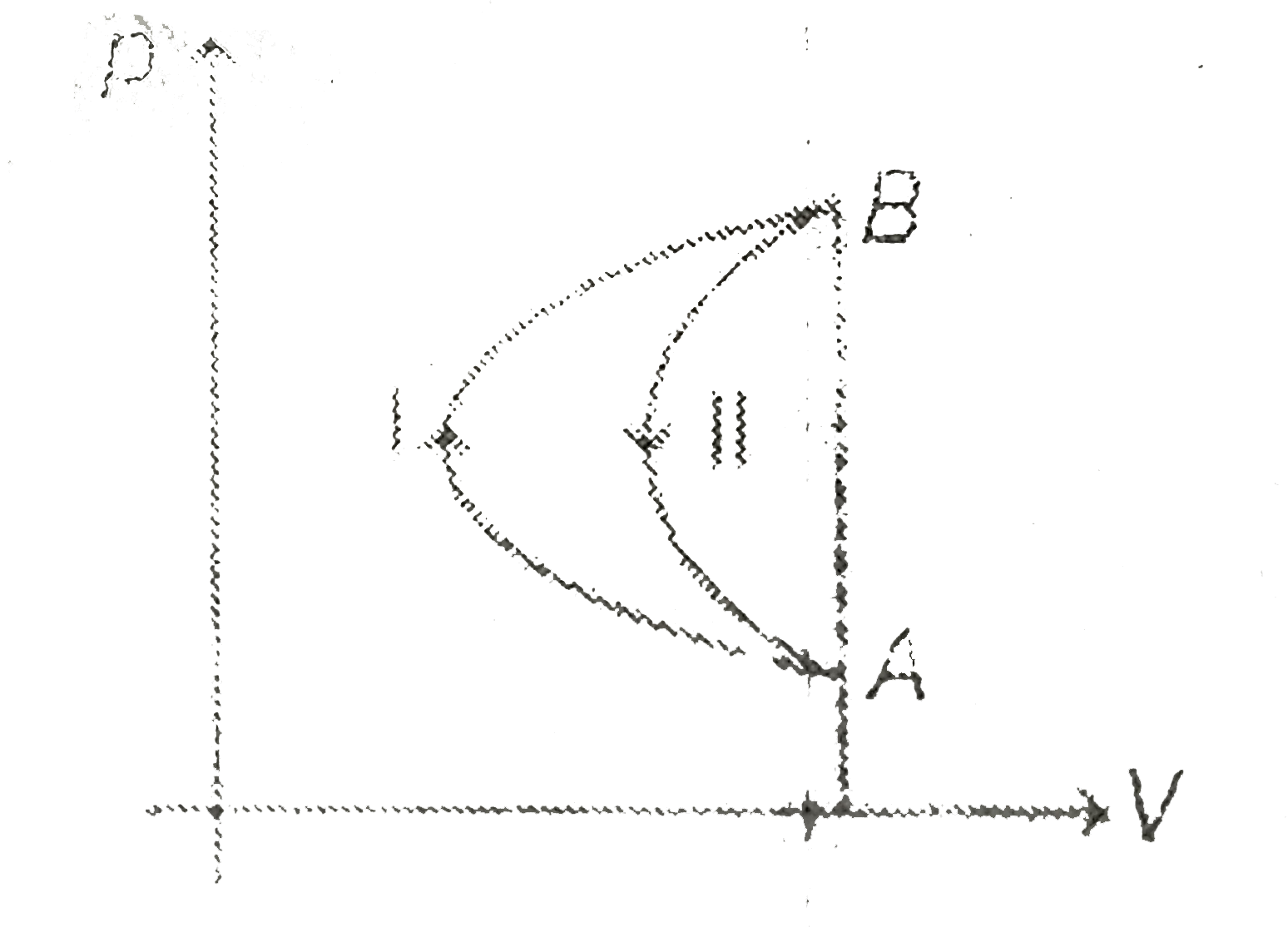
work is done by the gas
heat is rejected by the gas
no work is done by the gas.
nothing can be said about work as data is insufficient
The correct Answer is:B
As work done in state (II) is more than in state (I)
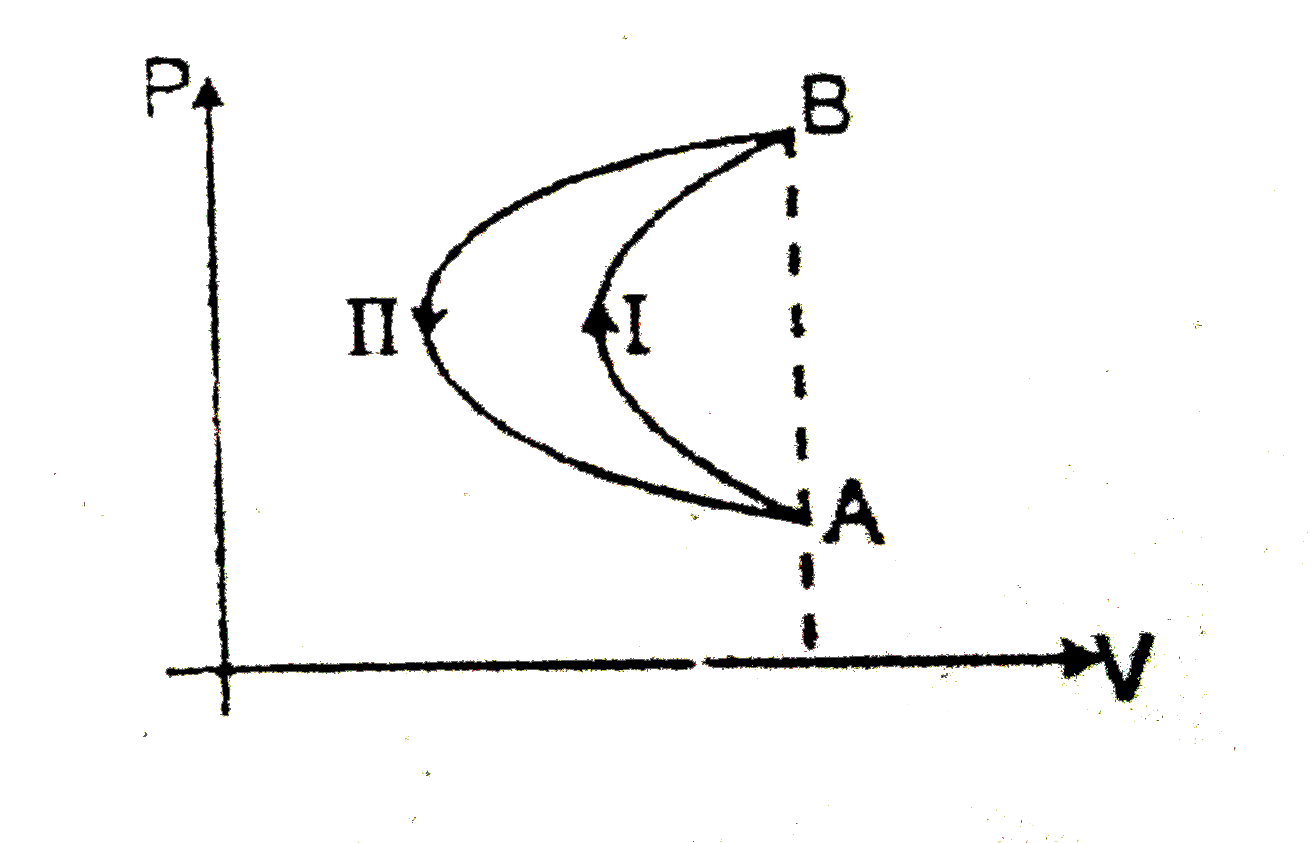
Topper's Solved these Questions
Similar Questions
In a cyclic process, a gas is taken from state A and B via path -I as shown in the indicator diagram and taken back to state A from state B via path-II. In the complete cycle
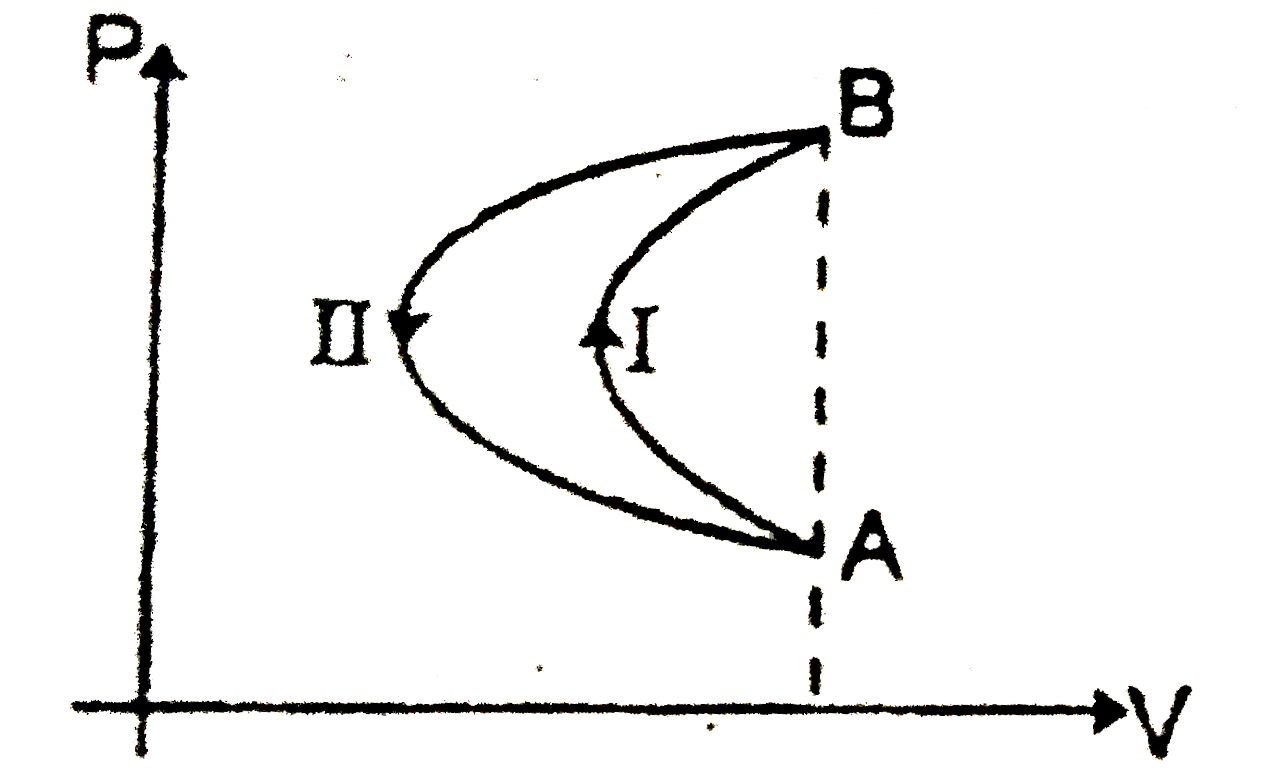
View SolutionA thermodynamic system is taken from state A to B along ACB and is brought back to A along BDA as shown in the PV diagram. The net work done during the complete cycle is given by the area
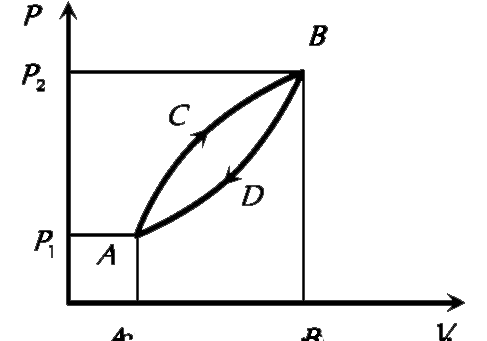
View Solution
Knowledge Check
An ideal gas undergoing a change of state from A to B through four different paths I, II,III and IV as shown in the P-V diagram that lead to the same change of state tyhen the change in internal energy is
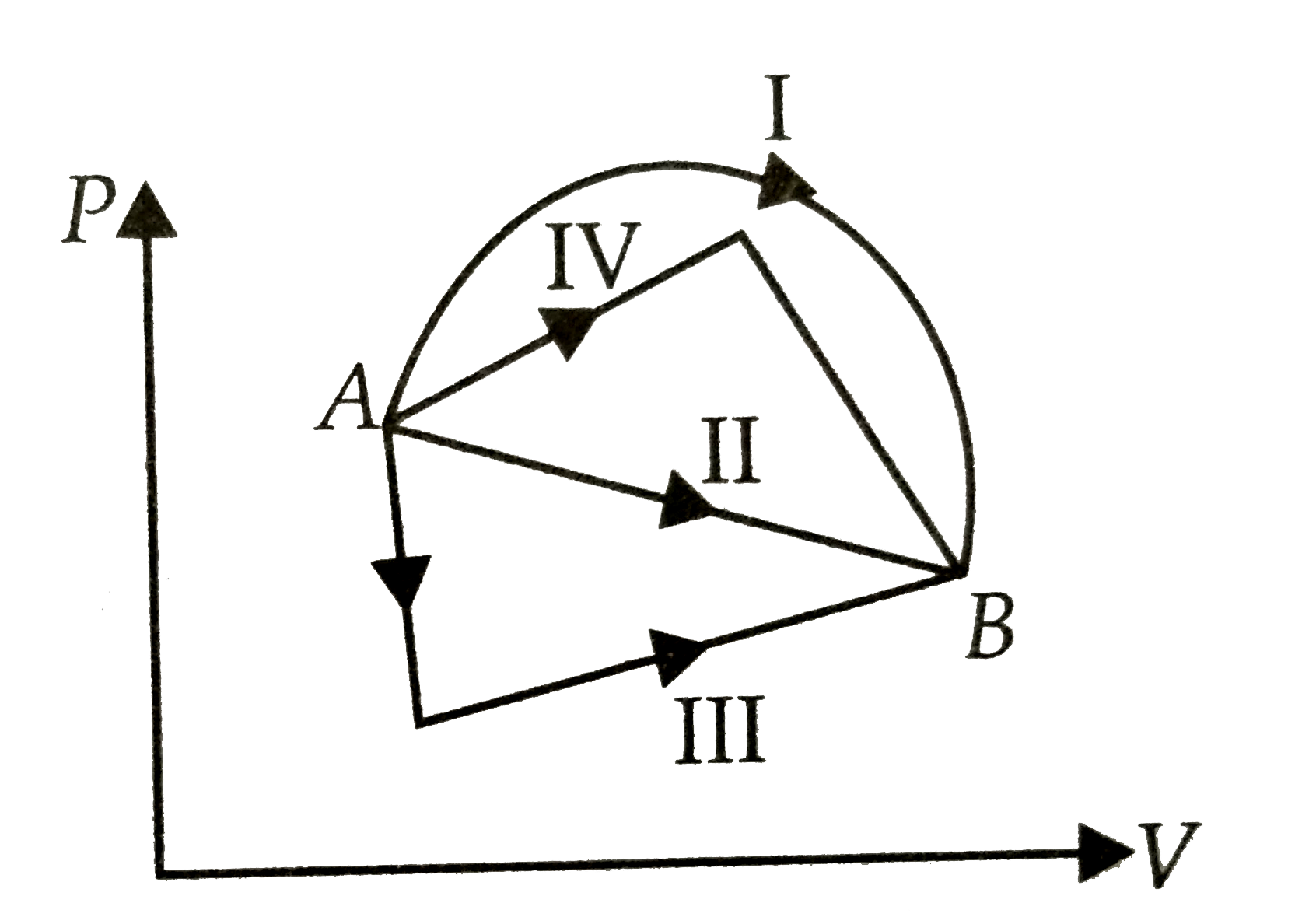 Asame in I and II but not in III and IVBsame in III and IV but not I I and IICsame in I, II and III but not I IVDsame in all the four cases
Asame in I and II but not in III and IVBsame in III and IV but not I I and IICsame in I, II and III but not I IVDsame in all the four casesIn changing the state of a gas adiabatically from an equilibrium state A to another equilibrium state B an amount of work equal to 22.3 J is done on the system.If the gas is taken from state A to B via a process in which the net heat absorbed by the system is 9.35 cal then the net work done by the system in latter case is
(Take 1 case =4.2 J)A15 JB16 JC17 JD18 J
An ideal gas goes from the state i to the state ∫ as shown in .the work done by the gas during the process
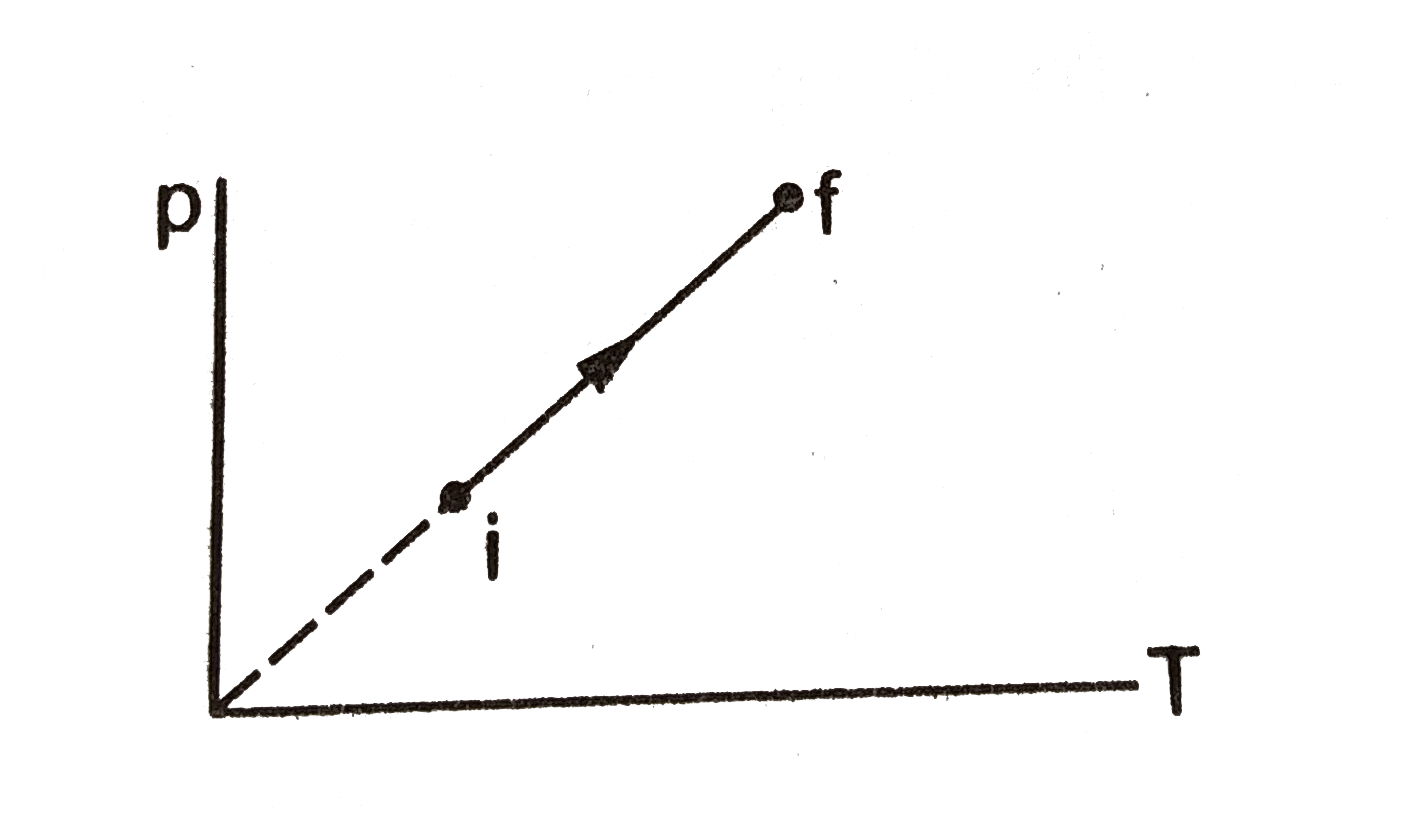
View SolutionAn ideal gas change from state a to state b as shown in Fig. what is the work done by the gas in the process?
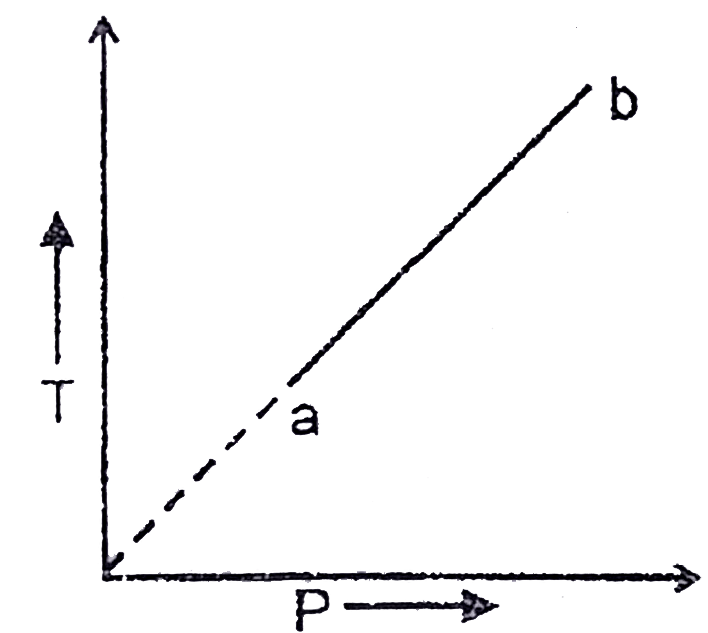
View SolutionIn given figure, when a thermodynamic system is taken from state A to state B via path ACB,100 cal of heat given to the system and 60cal work is done by the gas. Along the path ADB, the work done by the gas is 20cal. Find the heat flowing into the system in this case?
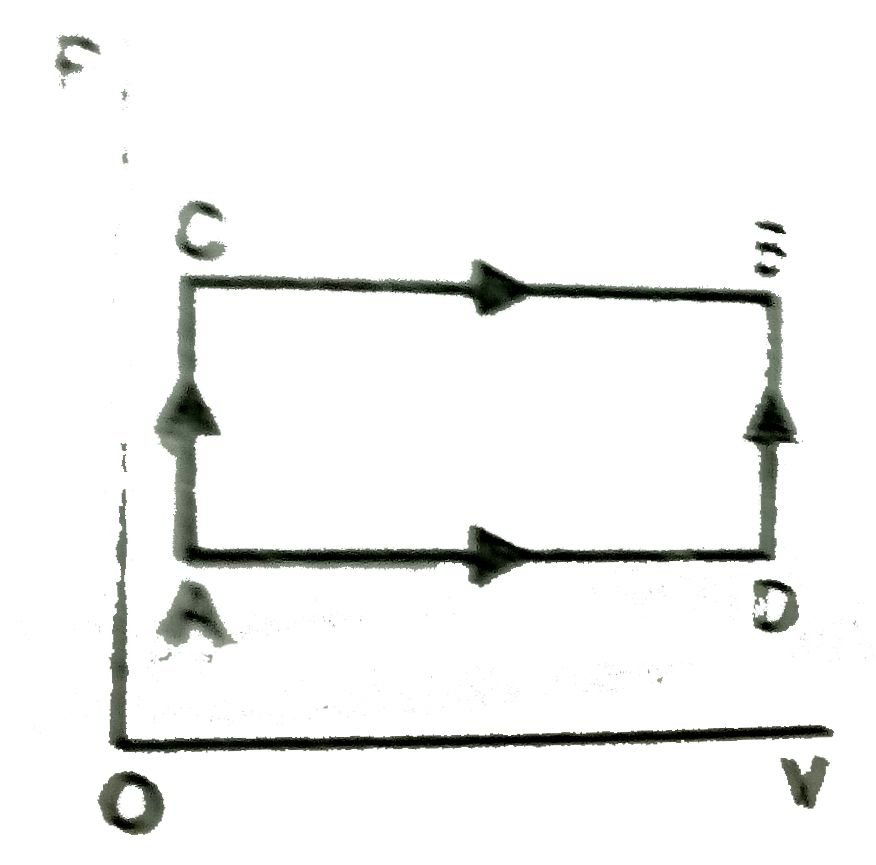
View Solutioncalculate the work done by a gas as it is taken from the state a to b, b to c and c to a as shown in
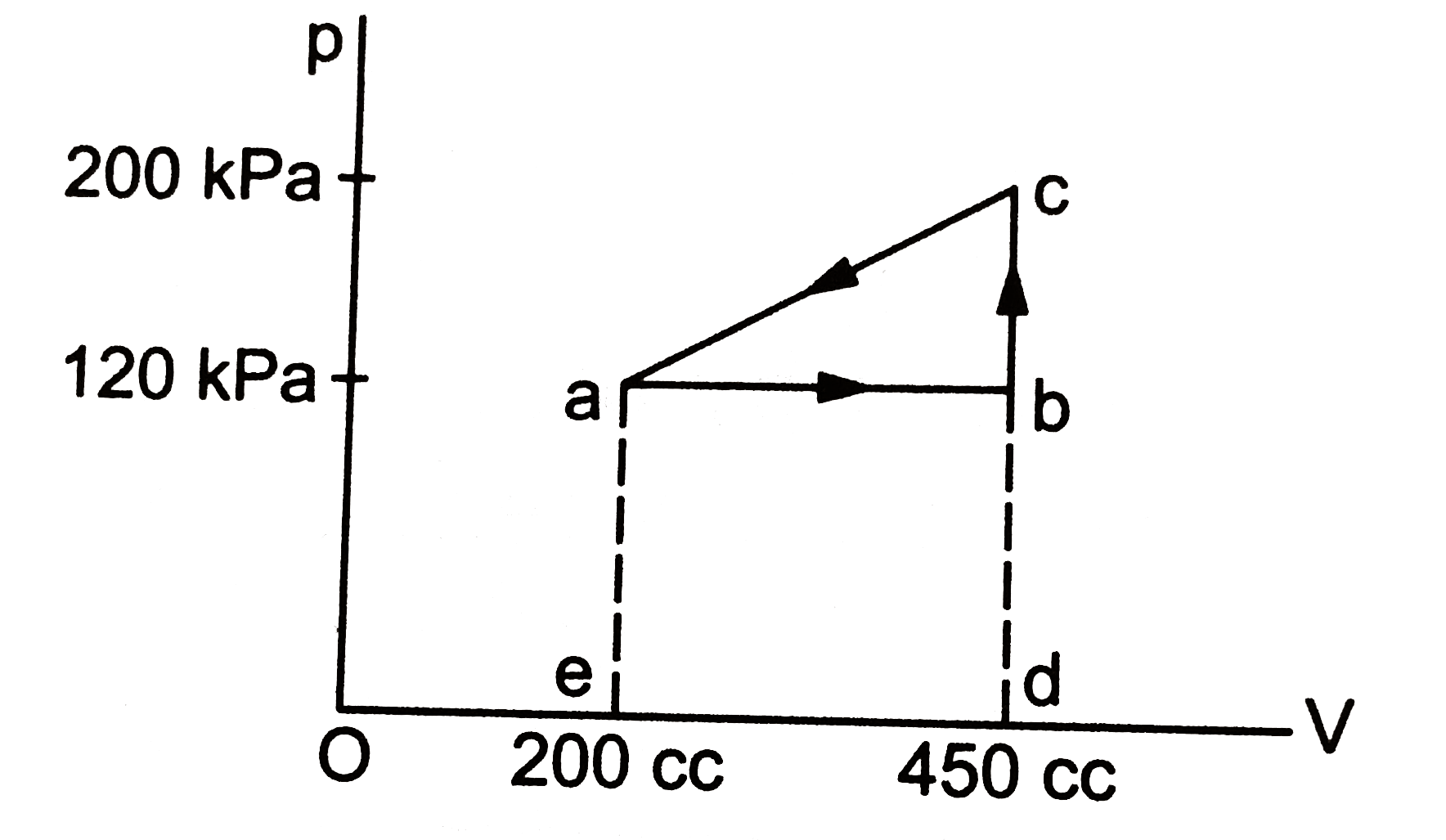
View SolutionAn ideal gas is taken from state 1 to state 2 through optional path A,B,CandD as shown in the PV diagram. Let Q,WandU represent the heat supplied, work done and change in internal energy of the gas respectively.
Then,
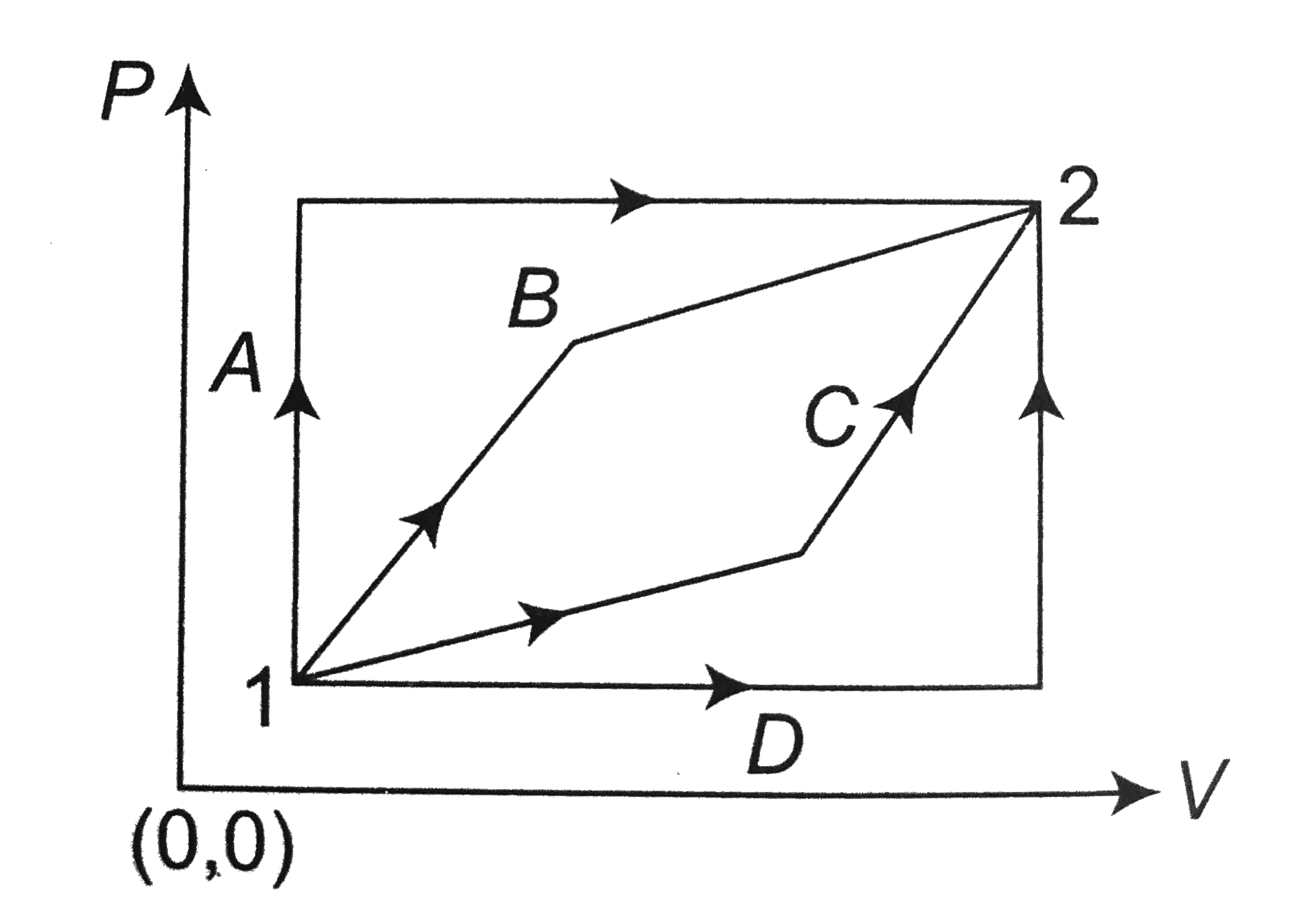
View SolutionAn ideal gas is taken from state A to state B via three different processes as shown in the pressure volume(P−V) diagram. If Q1, Q2 &Q3 indicates the heat absorbed by the gas and ΔU1 , ΔU2 &ΔU3 indicate change in internal energy in three processes, then
_PHY_E05_030_Q01.png)
View Solution
